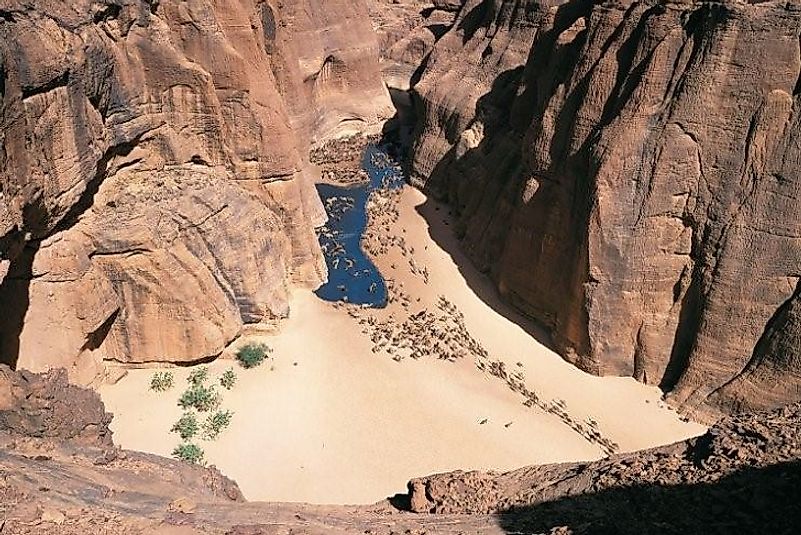Ennedi Massif And Rock Art, Chad

5. Description -
The Ennedi Massif and surrounding rock art in Chad is to be found in the northeastern region of the country in the Ennedi Plateau, which is located in the Ennedi Region of the nation. The site is a giant and impressive bulwark that is located in the Sahara Desert that is surrounded by sands and has magnificent deep valleys, towers, arches and pillars that have all been formed over millennium by the forces of nature. The total site is around 35,000 square kilometers (13,513 square miles) in size. The area is also noted for its rock paintings found throughout the site that have made it an important area for human history and culture, apart for its natural beauty and the rare animals species that can be found in the area. The Ennedi Massif and rock art of Chad was declared to be a United Nations Educational, Scientific and Cultural Organization (UNESCO) world heritage site in 2016, making it only the second one in all of Chad.
4. Natural History -
The Ennedi Massif is made of sandstone that has been shaped, sculpted, and eroded over thousands upon thousands of years by the various forces of nature. This has turned the rock into the cliffs, valleys, arches, towers, and other various and unique forms that we are able to see today. The site has been home to animals, plants and humans for a long time since there has been permanent water in the area, which is one of the reasons why the Ennedi Massif has so much rock art. The site has been located in relative isolation for much of its history, as it is located in the middle of the Sahara Desert. The town of Fada, with a population of around 23,000, is the closest town to the site located a few hours away.
3. Archaeological Significance -
The Ennedi Massif area is a site that is rich in petroglyphs, a form of rock paintings. Those that have been found in the area date to being anywhere between 7,000 to 2,000 years old. The rock art comes in either red, orange or white colors and is either represented as humans or various animals. These animals done in the paintings include crocodiles, camels, horses, birds, lions, cheetahs and more. The Ennedi Massif's most notable rock art is at the Niola Doa site that is made up of mostly engraved signs that makeup nearly life sized female figures that were discovered in fragments around half of a century ago. The art at the Niola Doa site dates to be around 7,000 years old.
2. Habitat and Biodiversity -
The Ennedi Massif in Chad has a varied and rich collection of fauna that can be found in the area. The site is also home to the rare site of the Desert Crocodile (Crocodylus suchus) that was once found all around the Sahara region but today has scattered remnant populations, one of which is found in the Ennedi Massif. They are unique from other remnants due to there dwarfism which developed overtime due to isolation and are found in the scarce pools in the river canyons, such as the Guelta d'Archei, which is one of the most famous gueltas in the Sahara. The threatened Sudan cheetah (Acinonyx jubatus soemmeringii) can be found in remote parts of the area. The area was also home to the threatened West African lion (Panthera leo senegalensis) until the 1940's and the Scimitar oryx (Oryx dammah), which is now extinct in the wild.
1. Environmental Threats and Conservation Efforts -
As of 2015, the African Parks organization, which is dedicated to protecting wildlife and managing national parks across Africa, announced that it had entered into a Memorandum of Understanding with Chad's government to make the Ennedi Massif into a protected area. Getting the site to become a protected area would help to protect the plants and wildlife in the area. The site was also declared a UNESCO World Heritage site this year, which means it will received funds to help the site be protected and conserved. This will be important to help to conserved the rock art at the site from natural erosion that occurs over time.







